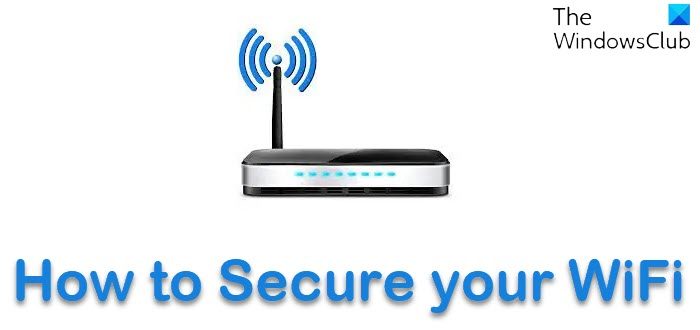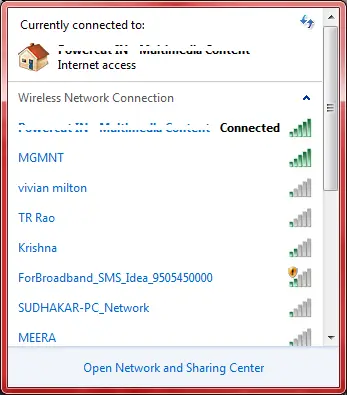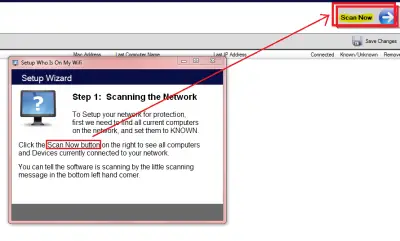Though routers have their own security features, it is not impossible to hack into others’ routers. Once someone gains access to someone else’s wireless router, he or she can not only use their bandwidth but also access the computers in the network, especially if it is a home network. Worst of all, they can use your WiFi for illegal purposes. There are some simple steps to secure your WiFi. We will also talk about a tool that lets you check who all are connected to your WiFi connection.

How to Secure your WiFi
The first thing someone encounters when he or she tries to log into your router is the router ID and password. You have to set it to something good. A random string would be good. Hard passwords are easy to create but tough to remember. You can use a password manager to generate a passcode for you, or you can create one on your own. If you are using a password manager, it will automatically fill in the credentials you need to enter the router page. The following explains how to change your router ID and password.
Change Password of Your Router
To log into your router, you need your router’s configuration pages. You have to type its IP address into a browser. The IP of the router is 192.168.1.1 in most cases. If you cannot get into the router page using that IP, open the command prompt window and type ipconfig /all. Note down the IP address of the Gateway. Try typing in that address into the address bar of your browser. If that, too, does not work, call up your router’s customer care after checking your router manual to see if the address is mentioned there.
To change the password and ID of your router, you have to log in to your router. The default ID is admin on routers of many companies. The default password is blank. If it is not blank, it could be 1234 or 0000 as in the case of cell phones. It might also be password. Try using these passwords, including the blank one, before calling up the router company’s customer care. You can also look into the router manual to see if the passcodes and IDs are mentioned there.
Read: How hackers can steal passwords over WiFi.
WPA2 protocol
What kind of security do you have on your network at home? Look at your Wi-Fi settings. It could be unsecured or secured with WEP, WPA or WPA2. WPA is better than WEP, but WPA2 is best. Change your network security settings to WPA2.
Read: Difference between WPA, WPA2 & WEP Wi-Fi Protocols.
Other Steps To Safeguard Your WiFi
Another password is required to connect to your router’s wireless connection. This is found under the Wireless (or relevant tab) of your router’s page in the browser. Make it strict too: non-guessable, a little long and include special characters. This is the password you enter after selecting a network under List of available wireless networks. Some people make it very easy to crack these passwords. I remember one neighbor having his name as SSID and his profession as his password. Don’t ever do that. Create a tough password and store it on something like your phone or Google Keep, etc.
While you are still on the router’s page in your browser, check its encryption type. If not already, select WPA2. Some other options show a combination of encryption methods. If WPA2 is not available separately, select WPA2-PSK. Save the configuration and log into your wireless connection to see if it works. If not, downgrade the encryption type to WPA-PSK/WPA2-PSK. That should solve the problem. Do not go for WEP as it is not very protective.
Who Is On My WiFi
Though you can check it through the Computer window, we recommend using a free tool that not only tells you how many computers are connected but also gives you the power to block unknown computers. Download freeware Who is on My WiFi from here on whoisonmywifi.com and install it.
This tool, like Wireless Network Watcher and Zamzom Wireless Network Tool, will show you who all are using your WiFi. The free version of Who Is On My WiFi is enough to know what all computers are connected to your WiFi and to block unknown computers.
The first time you run “Who is on My WiFi”, it scans the network for all the computers connected and provides you with many details including their last IP address and MAC IDs. This is important as you can verify if all computers are yours – using the MAC ID of each machine.
NOTE: The Scan Now button is in the main window of the software. Do not get confused; check the top right corner of the program window.
Also, note that the program will notify/show only the computers that are currently connected to your router/WiFi. If any computer is switched off, it won’t be shown. Make sure all your computers are ON before running the scan.
IMPORTANT: You will see one additional row in the results dialog box. That is your router. You will know because when you try to block it, the software will tell you “you cannot block your router”.
You can then name the computers if they are not already named using the computer name from Windows Installation. Remember to click SAVE else you will keep receiving warnings about unknown computers. When you click the X button to close the program, it keeps running in your system tray to keep monitoring if any unknown computer connects to your WiFi.
TIP: To know the Mac ID of a computer, open Adapter Properties (under Networks and Sharing), and hover your mouse over CONNECT USING.
Thus, I have tried to tell you how to secure WiFi using the router configuration page as well as through third-party software – and also how to know how many and what all computers are connected to your WiFi – using “Who is on My WiFi” software.
If you have anything to share, please comment.
Now read: Wi-Fi Security Tips: Precautions To Take At Public Hotspots.

